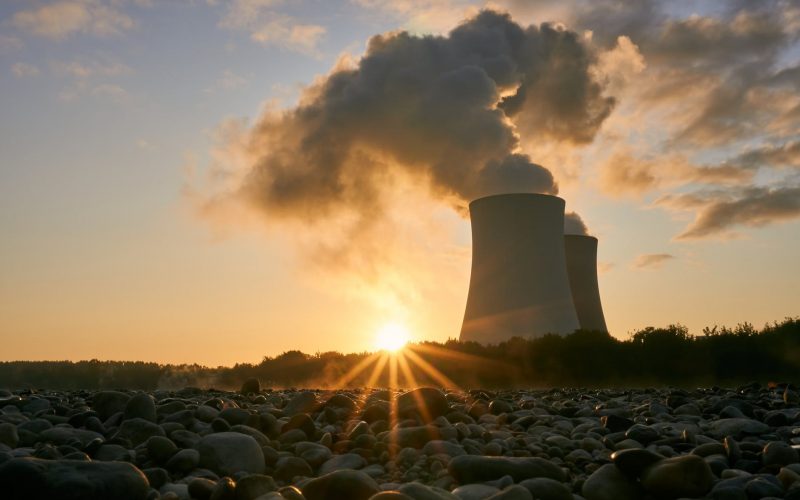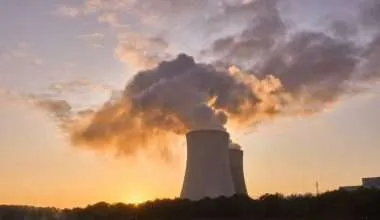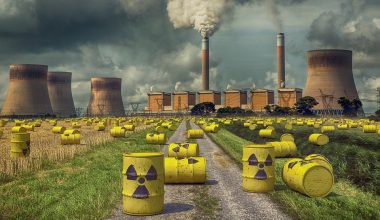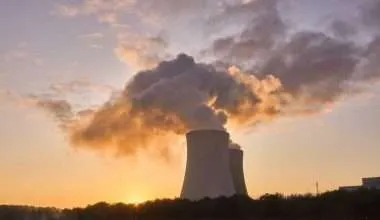Nuclear energy is a vital renewable energy resource for humans whose energy usage has drastically increased over the turn of the century. This energy found in the very core of an atom can be used to create various forms of energy including electrical energy which allows us to power all things which require electricity.
Nuclear energy can be found anywhere where there is a presence of atoms as these building blocks of life are the most important and crucial component in the formation of nuclear energy. Atoms are held together through intermolecular forces which upon breaking release energy; this energy is basically what nuclear energy is in a nutshell.
Radioactive elements are the ones that are most frequently utilized in nuclear energy as the instability in them and their ability to spontaneously decay allows them to be used for the generation of nuclear energy. Most commonly we use Uranium as the driving fuel in the production of nuclear energy. However, other radioactive elements such as radium, tungsten, and plutonium are also used in producing nuclear energy.
Uranium is a very commonly occurring element in the earth’s crust with a concentration between 2 to 4 parts per million. Uranium is found in rocks all around the world. Uranium was first discovered by German Chemist Martin Klaporth in 1789 and it is said that the uranium was first formed in supernovas about 6.6 billion years ago.
Uranium, like other elements, also has various isotopes but the isotope Uranium-235 commonly called U-235 is the one specifically preferred to produce nuclear energy. The U-235 isotopes contain 92 protons and 143 neutrons in its nucleus. As we have mentioned that uranium is commonly available in the earth’s crust throughout the world, the U-235 isotope is only about 0.7%.
Uranium is mined across the planet by various countries which included the United States, Russia, Canada, Uzbekistan, Australia, and Kazakhstan. Out of all the countries mentioned, Kazakhstan is the highest producer of uranium in the world.
Under certain conditions the U-235 can be split, thus producing energy. This is achieved by producing alternation within the nucleus so that neutrons can be split to form energy. The splitting of the neutrons within the nucleus of U-235 generates large amounts of heat energy which is then converted into steam that rotates large turbines to produce electrical energy. These processes of the splitting of neutrons occur again and again in large-scaled nuclear reactors or nuclear stations to produce enormous amounts of energy.
Uranium, and to be more precise nuclear energy, replaces the traditional non-renewable energy resources such as fossil fuels which were (and still are) being used as a source of generating electrical energy. The nuclear reactors allow a constant process of nuclear fission chain reactions to occur. This reaction makes heat which is then converted into steam which can then turn large-scaled turbines that generate electrical energy. This process of running the turbines can be associated with other types of renewable energy resources such as tidal energy or wind energy which also serve the purpose of turning these turbines to form electrical energy. However, the amount of electrical energy that is generated is nowhere near to the amount that we are generating from nuclear energy.
Nuclear reactors, on average, use 200 tons of uranium each year. The benefit, however, is that uranium and other radioactive substances used in nuclear plants can be recycled or re-enriched which reduces the amount of mining that is required to extract these radioactive substances from the earth’s crust and also prevents the exhaustion of these elements.
Nuclear energy and its impact (Effects of Nuclear Energy)
Nuclear energy has started to replace fossil fuels around the world. Fossil fuels are a widespread source of pollution as they emit greenhouse gases which can cause massive alterations in the weather conditions of the region due to climate change. With nuclear energy, there is no such threat as it is a form of clean and renewable energy. It doesn’t release any greenhouse gas emissions and nuclear plants can be built in rural or urban regions without any concerns of causing negative impact on the region.
Electricity produced by nuclear energy can run houses, shops, schools, universities, businesses, factories, and hospitals. The World Nuclear Association states that a typical 1,000-megawatt reactor can provide enough electricity for the modern city of up to one million people using about 200 tons of uranium each year. Most of the countries such as France are exclusively using nuclear energy to meet their high energy demands. Currently, there are 447 nuclear reactors in the world with 100 of them being situated in the United States.
Although nuclear energy is a very fruitful commodity for us, we must also understand the risks that nuclear energy may possess. Concerns are placed on the storage facilities and regarding the byproduct produced by nuclear energy processes. Radioactive waste must be handled carefully using the right clothing and equipment as contamination of people handling this waste can lead to serious health concerns. All personnel working in nuclear reactors and handling nuclear waste are constantly being tested for the concentration of radioactive material in their blood and if it exceeds a certain threshold, those workers are removed from the site and given proper medical treatment until the amount falls below the required normal levels.
There is a serious issue concerning the leak of nuclear content from storage sites. This is because if nuclear waste was to leak and be exposed to the surroundings, it may cause serious damage to the environment and all organisms situated nearby. One of the most catastrophic events related to nuclear reactors was the one in Chernobyl in Ukraine in 1986. Many efforts have been done and strict rules and regulations have been put in place by countries and organizations to prevent such disasters from ever occurring in the future.




